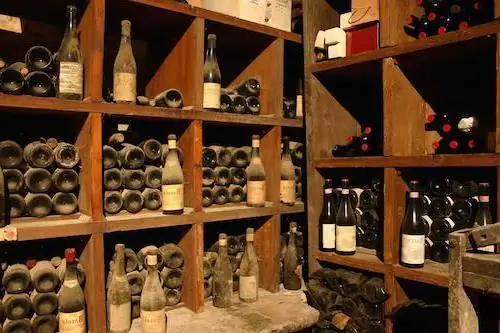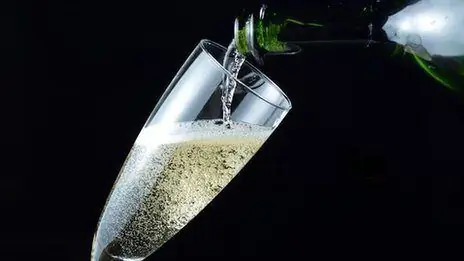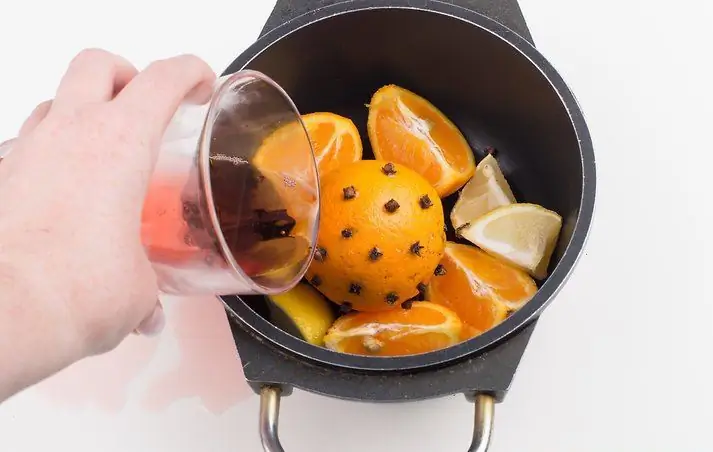2025 Author: Isabella Gilson | [email protected]. Last modified: 2025-01-23 12:50:34
Spain ranks third in the world (after France and Italy) in wine production. Every year the country supplies the market with more than thirty-four million hectoliters. And in terms of area, the vineyards of Spain have no equal. More than a million hectares of land have been allocated for vines. In Spain, as in all countries, there is an administrative division. But there is also a distinction between wine regions. And the most famous of them is Rioja. The wines of this region, as well as the province of Priorat, are the only ones that deserve an honorary recognized qualification of origin. Therefore, if you see a bottle with the inscription DOCa Rioja or DOQ Priorat in the store, do not hesitate - these are drinks of the highest class. But in this article, we will focus on only one wine region in Spain - Rioja. About what sub-provinces it is divided into and what varieties of berries are grown there, read below.

Where is Rioja
The wines of this region are famous not in vain. The climatic features of Rioja and its soil make the drink from the vine unique. The region itself is small, if not small. It is bordered by Castile-Leon to the west and south. And from the north and east, coastal regions adjoin Rioja: Navarre and the Basque Country. All provinces of Spain are wine-producing to some extent. But Rioja is famous far beyond its borders. For many people, the name of this region means only one thing - wonderful wine. What makes Rioja so popular?
First of all, its climate. From the north, it is sheltered from the piercing winds from the Bay of Biscay by the Sierra Cantabria mountain range. And from the west and south it is outlined by the Sierra de la Demanda ridge. The whole valley between the mountains is occupied by vineyards. The vines grow on unique soils. They are alluvial. There is both limestone and high-grade red clay. And numerous rivers and streams saturate the too dry air of the valleys with moisture.

Sub-regions
The name of the province was given by the river (Spanish "rio") Okha. This is a tributary of the Ebro. Other rivers divide the region into seven valleys. Each of them has its own microclimate and unique soils. But the province is divided into three sub-regions. The first zone is Rioja Alta, which means "Upper". This is the largest subregion. Vineyards occupy twenty-five thousand hectares here. In Upper Rioja, you can feel the breath of the Atlantic. Summers are hot and dry, but frosts occur in early spring. Rioja Alavesa is located on the northern bank of the Ebro River. It is the smallest sub-region (with a vineyard area of twelve thousandhectares). The climate here is closer to the Mediterranean. And finally, the sub-region of Baja - Lower Rioja. The wines produced here are characterized by a high alcohol content, are very extractive and have a delicate fruity aroma. The soils here are alluvial, and the climate is very warm, without sudden changes in temperature and frost. The area of vineyards is more than twenty thousand hectares.
History
Archaeological excavations have shown that in a province like Rioja, wine was produced even before the arrival of the ancient Romans. Although it is believed that the Iberians did not cultivate the vine. The ancient Romans exported wine from Rioja to the capital. Moreover, white varieties were preferred. For some reason, Mauritanian rule did not harm winemaking in any way. In the Middle Ages, monks from numerous monasteries began to refine and select vines. Outside of Spain, however, Rioja wines were almost unknown. As they say, misfortune helped.
In the sixties of the nineteenth century, a terrible misfortune befell the French regions - phylloxera, which destroyed all the vines in the bud in such famous provinces as Bordeaux, Champagne and Burgundy. Winemakers, in order to fulfill their obligations to customers, began to look for other sources of raw materials. And found them in Rioja. Since then, in the Spanish region, preference has been given to red varieties. It was they who at one time replaced Bordeaux wines.

Vine varieties
Tempranillo grows in the cool sub-Atlantic climate where the Rioja Alta is located. This red grapegrown throughout Spain. However, only in Rioja does it acquire characteristic qualities that cannot be confused with anything else. "Tempranillo" gives the wine a strong berry flavor and rich ruby color. It has low acidity, but on the other hand, it is low in tannins. Therefore, the basis of all local blends is the wine "Tempranillo". Rioja Alta and Alavesa are also characterized by red grape varieties such as Graciano and Mazuelo. A variety of white grapes, viura, is also grown here. In a province like Rioja Baja, the generally recognized king is the "garnacha tinta". This red grape variety is none other than the French "grenage noir". However, in the warm conditions of Lower Rioja, the berries get their new characteristic sound. Garnacha tinta, like tempranillo, is the basis for blends.

Technology
Spanish wine "Rioja" is not only the product of a particular variety of vine or place of growth of berries. Terroir is certainly important, as is skillful blending. But no less important is the production technology. In the Rioja region, the wine is first aged in barrels, and then for a long time - in bottles. At the first stage of production, preference is given to local white, as well as American oak. This wood gives the drink a light vanilla flavor. Oak barrels from France are becoming no less popular now. Aging in the bottle allows the wine to fully reveal its potential - bouquet and taste.
Standard Rioja matures in barrels for less than a year. If onThe label contains the word Crianza, which means that the must played in oak containers for more than a year and "calmed down" in the bottle for the same amount. Reserva can boast of even greater endurance. This wine was in a barrel for two years, and half of that line was in a glass container. But the "Gran Reserva" is especially appreciated. This wine is created in unique years, which are characterized by high yields and a special taste of berries. Then the producers allow it to mature in barrels for more than two years, and three more are aged in bottles. There is a similar gradation for white wines. Only their aging time is almost half that of red ones.

Reading the label
The names of wines from the Rioja region for Russia say little to the average consumer. First of all, we must look for the coveted abbreviation DOC on the label. It stands for Denominacion de Origen Calificada - "control of recognized origin". This means that all grapes for the drink were grown in Rioja. Next, we scoop out information about exposure. You should know that Joven (young wine from last year's harvest, bottled without casks) is not produced in Rioja. The label should say "Criansa", Reserva or "Gran Reserva". The color of the wine is visible even without inscriptions.
But still, the label should say "Tinto" (red), "Blanco" (white) or "Rosado" (pink). The following is information about the acidity of the wine. Dry is denoted by the word "Seko", and sweet - "Dulce". Semitones are defined by the prefix semi. Cosecha refers to the year of the harvest. The word "Bodega" meanswinery house. The status of the wine will only increase if the label says "Embolellado en origen". This inscription indicates that the drink was bottled at the place of its production.
Terroir classification
The most ordinary wine in Spain is called Vino de Mesa. The region of origin is not indicated here. A higher rank is "Vino de la Tierra", in other words, from a certain part of the country. The abbreviation DO takes the quality of the drink one step further. She points out that the berries for the drink were collected in one wine-growing region. It could be La Mancha, Navarre, Andalusia. But the abbreviation DOCa can only be worn by wines from the Rioja region. And finally, Pago. Pago is Spanish for "vineyard" and that says it all. The drink was given life by vines that grow on special slopes and farms. Wine classification "Pago" corresponds to the French high status of "Grand Cru" in Burgundy. Based on this, many producers insert the word pago into the name of the wine, hoping to fool inexperienced buyers. Vinos de Pagos Calificados must be indicated on the labels of the highest Spanish category.

Red wines
Once upon a time, the region was famous for its white wines. But the phylloxera invasion in the French province of Bordeaux broke the stable traditions. To have a market, local farms switched to dark varieties. The hallmark of the Rioja region is dry red wine. And the basis for the drink is the king of the local pagos - "tempranillo". It should be said that the local wines are rarely single-varietal. Muchmore often, a blend gives the drink an elegant and characteristic taste. But in it "tempranillo" always plays the first violin. A classic example of such a blend is Antagno Rioja wine (dry or fortified). "Tempranillo" in it is not less than eighty-five percent. It is favorably set off by "graciano" (ten) and "masuelo" (five percent). Garnacha (the same grenage, but with a Spanish temperament) and maturana are also very good.
White wines
Do not forget about the traditions in Rioja. Three varieties of vines with white berries continue to be cultivated here. The most popular and oldest is "viura". In other countries, this variety is known as "macabeo". But it comes from Rioja and is said to have been cultivated here before the arrival of the Romans. "Viura" gives lively and light wines with great acidity. In order to increase the potential for aging, the variety is blended with "Malvasia". And "garnacha blanca" woven into the bouquet of "viura" gives birth to the best white Rioja wines. By the way, they can be single-sorted. An example of this is the Marques de Murrieta wine. It is 100% viura. The wine has a bright yellow color, enveloping the taste, which reads shades of honey and almonds, a fresh smell of fruit. For blends, Rioja also uses Garnacha Blanca, Turrentes, and even foreign Chardonnay and Sauvignon, although in small proportions.
Rosé wines
They have a beautiful rich color. According to DOCa rules, these Rosados must contain at least twenty-five percent red Rioja wine. If Tempranillo is the last one, the drink ischaracteristic, full-bodied. "Garnacha tinta" gives the rosé wine a rich bouquet and beautiful color. Such drinks are aged in barrels for about six months, and go on sale three years after harvest. A typical example of rosé wines from Rioja is Finca Nueva. The drink has a raspberry hue. Aromas of cherries, strawberries and red berries are heard in the bouquet. The wine is well balanced, with pleasant acidity, delicate taste. Great addition to crab salads, pizza, duck meat.

Wine "Rioja": reviews
Gourmets are captivated by the perfectly balanced taste and rich aroma of drinks from this smallest province in Spain. The only thing that overshadows the holiday is the price. More precisely, even an extra charge. Indeed, for example, a very worthy wine from Rioja Banda Azul (a blend of tempranillo, garnacha and mazulo) costs about four and a half euros in Spain. And in Russia, a bottle of the same wine costs about six hundred rubles. If you want to taste how pure tempranillo "sounds", you should buy "El Coto" with a deer on the label. Another classic blend wine is Marques de Coqueres. This is the crianza of the 2008 harvest. The wine is perfect for Mediterranean dishes - jamon, paella. In Spain, a bottle costs eight euros, and in Russia, a thousand rubles.
Different from French and Italian wines
Climatic and soil characteristics of the region allow growing ripe and juicy berries with a characteristic taste. Spanish wine "Rioja" has a rich color. It is full-bodied, with an indescribable aftertaste. One of the most elite wines is Rioja Alta 890 Gran Reserva. In Spain, it costs about seventy-five euros. Only gourmets drink it, and on major holidays.
Recommended:
Bordeaux region, wines: classification and description. The best brands of "Bordeaux"

The Romans imposed the culture of winemaking on the French back in the 6th century. BC e. They forced the Gauls to plant vines with fire and sword. After 500 years, the Romans destroyed all the vineyards of Gaul, as they became a threat to all imperial trade. Only the love of the inhabitants for this noble drink was already impossible to eradicate, they started all over again
Collection wines. Collection of collection wines. Vintage collection wine

Collection wines are drinks for true connoisseurs. After all, you must admit, not everyone can understand by taste when the wine was prepared (what year the berry harvest was) and in what area. Most will simply note the incredible taste and aroma of the wine. However, it is very easy to get used to the exquisite taste, and once you try such a drink, you will want more
Categories of wines. How are wines categorized? Classification of wines by quality categories

As they said in ancient Rome, In vino veritas, and it is impossible not to agree with this. After all, despite technological progress and the cultivation of new varieties of grapes, wine remains one of the most honest drinks. People can fake a well-known brand, but you can't fake the taste, smell and color. And how, 1000 years ago, high-quality wine can loosen the tongue of even the most laconic person
How to make mulled wine at home? Spices for mulled wine. Which wine is best for mulled wine

Mulled wine is an alcoholic warming drink. It is served in winter in all reputable establishments. But to enjoy this drink, it is not necessary to go to a restaurant. You can easily cook it yourself. How to cook mulled wine at home will be discussed in detail in the article
Wines for mulled wine. What kind of wine is needed for mulled wine?

As for the base - wine for mulled wine, the classic version is red, made from dessert and table grapes. For the fortress, an intoxicant is added: suitable liqueurs, cognacs, rum. However, you can't go overboard with them. After all, the task of the drink is to pleasantly relax a person, fill the body with warmth, cheer up, improve well-being

